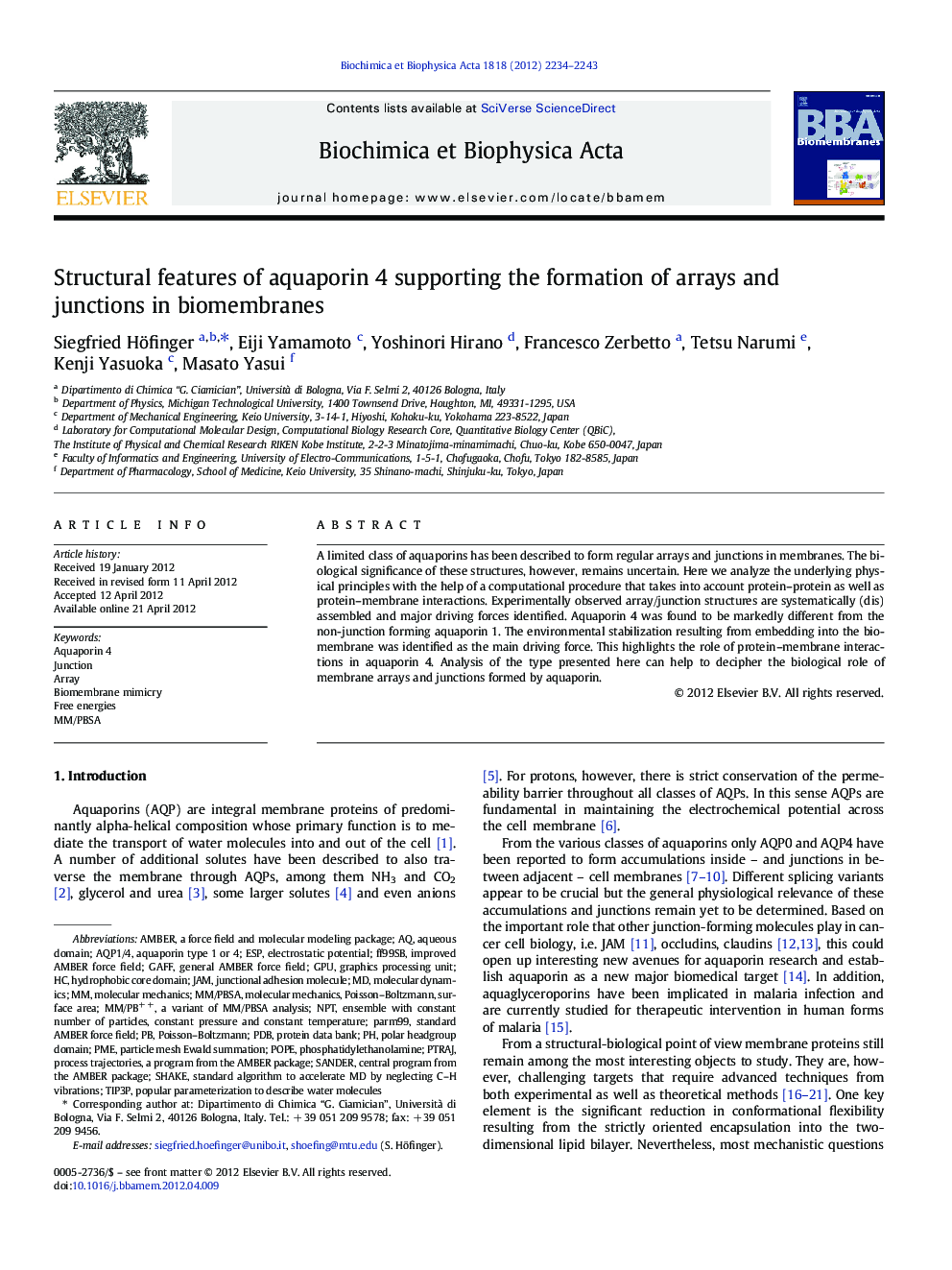| Article ID | Journal | Published Year | Pages | File Type |
|---|---|---|---|---|
| 1944449 | Biochimica et Biophysica Acta (BBA) - Biomembranes | 2012 | 10 Pages |
A limited class of aquaporins has been described to form regular arrays and junctions in membranes. The biological significance of these structures, however, remains uncertain. Here we analyze the underlying physical principles with the help of a computational procedure that takes into account protein–protein as well as protein–membrane interactions. Experimentally observed array/junction structures are systematically (dis)assembled and major driving forces identified. Aquaporin 4 was found to be markedly different from the non-junction forming aquaporin 1. The environmental stabilization resulting from embedding into the biomembrane was identified as the main driving force. This highlights the role of protein–membrane interactions in aquaporin 4. Analysis of the type presented here can help to decipher the biological role of membrane arrays and junctions formed by aquaporin.
Graphical abstractFigure optionsDownload full-size imageDownload high-quality image (376 K)Download as PowerPoint slideHighlights► Computational analysis of association free energies for array/junction-forming aquaporins. ► Tetrameric assemblies and combinations thereof are analyzed. ► Major driving forces are identified.
